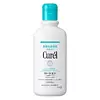What's inside
What's inside
 Key Ingredients
Key Ingredients

No key ingredients
 Benefits
Benefits

 Concerns
Concerns

 Ingredients Side-by-side
Ingredients Side-by-side

Allantoin
Skin ConditioningWater
Skin ConditioningGlycerin
HumectantSqualane
EmollientCetyl-Pg Hydroxyethyl Decanamide
Skin ConditioningEucalyptus Maculata Extract
Skin ConditioningSorbitan Stearate
EmulsifyingDimethicone
EmollientBis-Methoxypropylamido Isodocosane
EmollientPolyglyceryl-6 Diisostearate
EmulsifyingCholesterol
EmollientCholesteryl Isostearate
EmollientXanthan Gum
EmulsifyingSodium Methyl Stearoyl Taurate
CleansingSuccinic Acid
BufferingButylene Glycol
HumectantCetearyl Alcohol
EmollientStearyl Alcohol
EmollientSodium Paraben
PreservativeAllantoin, Water, Glycerin, Squalane, Cetyl-Pg Hydroxyethyl Decanamide, Eucalyptus Maculata Extract, Sorbitan Stearate, Dimethicone, Bis-Methoxypropylamido Isodocosane, Polyglyceryl-6 Diisostearate, Cholesterol, Cholesteryl Isostearate, Xanthan Gum, Sodium Methyl Stearoyl Taurate, Succinic Acid, Butylene Glycol, Cetearyl Alcohol, Stearyl Alcohol, Sodium Paraben
Water
Skin ConditioningGlycerin
HumectantCetyl-Pg Hydroxyethyl Palmitamide
Skin ConditioningTrisiloxane
Skin ConditioningDimethicone
EmollientHydrogenated Polydecene
EmollientPEG-3 Dimethicone
Skin ConditioningAllantoin
Skin ConditioningMagnesium Sulfate
Butylene Glycol
HumectantIsostearyl Glyceryl Ether
Skin ConditioningPEG-12 Dimethicone
Skin ConditioningSuccinic Acid
BufferingSodium Hydroxide
BufferingEucalyptus Globulus Leaf Extract
PerfumingTocopherol
AntioxidantMethylparaben
PreservativeWater, Glycerin, Cetyl-Pg Hydroxyethyl Palmitamide, Trisiloxane, Dimethicone, Hydrogenated Polydecene, PEG-3 Dimethicone, Allantoin, Magnesium Sulfate, Butylene Glycol, Isostearyl Glyceryl Ether, PEG-12 Dimethicone, Succinic Acid, Sodium Hydroxide, Eucalyptus Globulus Leaf Extract, Tocopherol, Methylparaben
 Reviews
Reviews

Ingredients Explained
These ingredients are found in both products.
Ingredients higher up in an ingredient list are typically present in a larger amount.
Allantoin is a soothing ingredient known for its protective and moisturizingg properties. Because of this, it is often added to products with strong active ingredients.
Studies show higher concentrations of this ingredient can promote wound healing.
Though it can be derived from the comfrey plant, allantoin is produced synthetically for cosmetic products to ensure purity.
Learn more about AllantoinButylene Glycol (or BG) is used within cosmetic products for a few different reasons:
Overall, Butylene Glycol is a safe and well-rounded ingredient that works well with other ingredients.
Though this ingredient works well with most skin types, some people with sensitive skin may experience a reaction such as allergic rashes, closed comedones, or itchiness.
Learn more about Butylene GlycolDimethicone is a type of synthetic silicone created from natural materials such as quartz.
What it does:
Dimethicone comes in different viscosities:
Depending on the viscosity, dimethicone has different properties.
Ingredients lists don't always show which type is used, so we recommend reaching out to the brand if you have questions about the viscosity.
This ingredient is unlikely to cause irritation because it does not get absorbed into skin. However, people with silicone allergies should be careful about using this ingredient.
Note: Dimethicone may contribute to pilling. This is because it is not oil or water soluble, so pilling may occur when layered with products. When mixed with heavy oils in a formula, the outcome is also quite greasy.
Learn more about DimethiconeGlycerin is already naturally found in your skin. It helps moisturize and protect your skin.
A study from 2016 found glycerin to be more effective as a humectant than AHAs and hyaluronic acid.
As a humectant, it helps the skin stay hydrated by pulling moisture to your skin. The low molecular weight of glycerin allows it to pull moisture into the deeper layers of your skin.
Hydrated skin improves your skin barrier; Your skin barrier helps protect against irritants and bacteria.
Glycerin has also been found to have antimicrobial and antiviral properties. Due to these properties, glycerin is often used in wound and burn treatments.
In cosmetics, glycerin is usually derived from plants such as soybean or palm. However, it can also be sourced from animals, such as tallow or animal fat.
This ingredient is organic, colorless, odorless, and non-toxic.
Glycerin is the name for this ingredient in American English. British English uses Glycerol/Glycerine.
Learn more about GlycerinSuccinic acid is an odorless white powder. It is naturally found in our bodies but can also be derived from living organisms.
Succinic acid is water-soluble. The pH level of this ingredient is between 4.2 and 5.6.
While succinic acid posesses antimicrobial, antioxidant, and anti-inflammatory properties, these properties have not been studied in skincare products.
Fun fact: Succinic acid was known as the 'spirit of amber' in the past. This is because it used to be derived from distilling amber.
Learn more about Succinic AcidWater. It's the most common cosmetic ingredient of all. You'll usually see it at the top of ingredient lists, meaning that it makes up the largest part of the product.
So why is it so popular? Water most often acts as a solvent - this means that it helps dissolve other ingredients into the formulation.
You'll also recognize water as that liquid we all need to stay alive. If you see this, drink a glass of water. Stay hydrated!
Learn more about Water